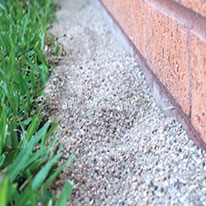
Adding Sustainable Insect Barriers to the Building Envelope
Polyguard Products specializes in products that protect surfaces and structures from moisture, water and other undesired substances. Polyguard is currently operating under three "core" divisions with a number of growing divisions under the Polyguard umbrella.
Think of Polyguard as an innovator and manufacturer of barriers – not just barriers against moisture and corrosion, but against contaminants like radioactive radon gas and methane. No sick buildings here.
Tuesday, December 20, 2016 - 12:00pm to 1:00pm EST
Traditional pest management strategies have centered around the regular application of chemical toxins, which are hazardous to human health, and to the environment. LEED has begun to call for implementation of Integrated Pest Management practices, which specifically prioritize the use of non-chemical interventions to control pest infiltration into the structure. Join us in this one-hour course to hear from entomologists to learn how to design, build, and operate structures to physically exclude pests and to radically reduce the need for chemical-based pest control practices.
- 1. Understand how insects degrade sustainability
- 2. Understand how existing designs incorporate many insect entry points
- 3. Understand how forces of nature enlarge existing insect entry points, and create new entry points.
- 4. Explain why LEED addresses pesticides, which are chemicals of concern, by calling for the use of Integrated Pest Management (IPM)
- 5. Realize that IPM calls for designers to “build in non-chemical pest barriers”
- 6. Incorporate sustainable insect barriers into their building envelope design





